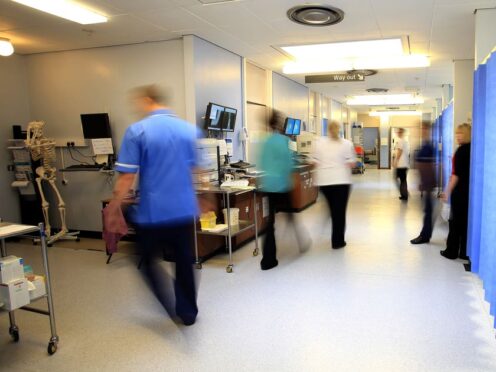
Staff burnout, exhaustion and low morale are the biggest challenges facing NHS trusts when it comes to bolstering productivity, health leaders have said.
High vacancy rates and ongoing strikes have also constrained growth and stretched budgets, according to NHS Providers.
The organisation’s new report said trusts are “firmly focused” on improving productivity levels, but this effort must be matched by long-term cross-government support, including capital investment in NHS buildings and facilities.
It added that trusts are “facing significant difficulties in delivering key operational priorities”, with the biggest challenges highlighted as staff exhaustion, burnout and low morale.
It comes after new figures published earlier this month showed an estimated 7.57 million treatments were waiting to be carried out on the NHS in England at the end of April, relating to 6.33 million patients – up slightly from 7.54 million treatments and 6.29 million patients at the end of March.
Sir Julian Hartley, chief executive of NHS Providers, said: “Work being done on the ‘front line’ of the NHS offers real hope.
“It’s encouraging to see how trusts are finding positive solutions in the face of extraordinary pressures.
“But if we’re serious about improving the sustainability of the health service and want to help it to be as productive as possible then the efforts of trusts must be matched by long-term cross-government support including capital investment in NHS buildings and facilities.”
One case study highlighted in the report is the work being carried out by South Warwickshire University NHS Foundation Trust (SWFT), which operates four hospitals in Warwickshire, as well as community services for more than 500,000 people.
The trust has been working to bolster productivity since 2022, when it implemented a new strategy.
Since then, it has set up a mobile operating theatre to carry out elective orthopaedic procedures in a bid to cut waiting lists.
Elsewhere, Calderdale and Huddersfield NHS Foundation Trust (CHFT), which employs more than 6,900 workers, rolled out a new cost per case system which paid all theatre staff based on the number of patients that have been operated on rather than the amount of time they have worked.
Community and mental health services provider Oxleas NHS Foundation Trust has focused on the introduction of digital devices, such as tablets, on inpatient wards, allowing staff to update patient records in real-time.
Sir Julian added: “Our report is a snapshot of much wider work carried out by trusts and their partners to improve the quality of care while giving better value for money.
“The NHS is committed to productivity growth and trust leaders understand the importance of reducing waste, adding value and sustainably improving services.
“Trusts are working flat out to maintain high-quality care and tackle treatment delays, while doing more with existing resources.
“They are at the heart of many of the innovative solutions across the NHS, delivering for patients and for the populations they serve.”

Enjoy the convenience of having The Sunday Post delivered as a digital ePaper straight to your smartphone, tablet or computer.
Subscribe for only £5.49 a month and enjoy all the benefits of the printed paper as a digital replica.
Subscribe